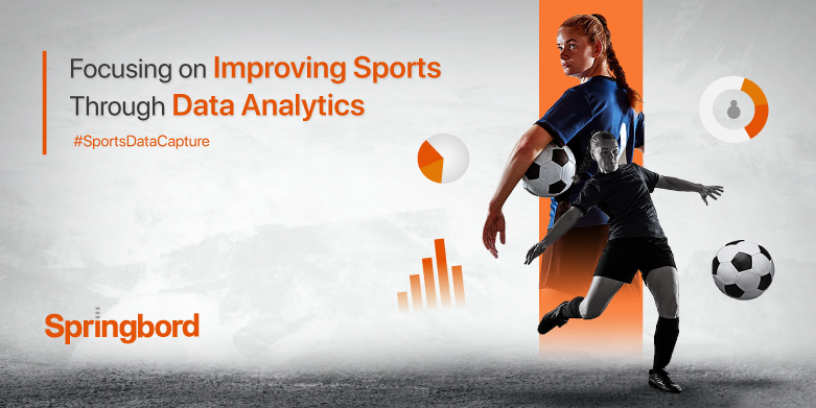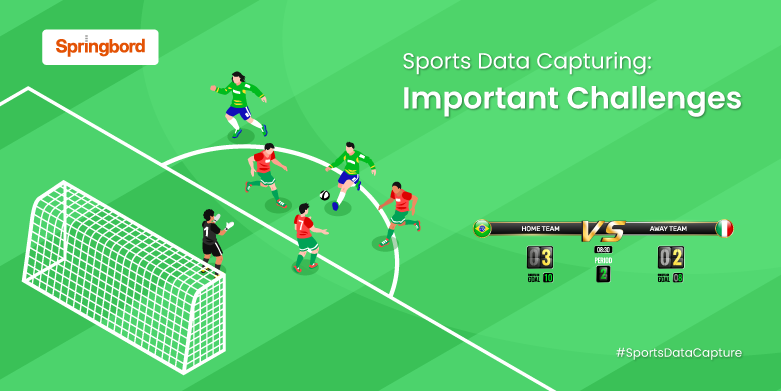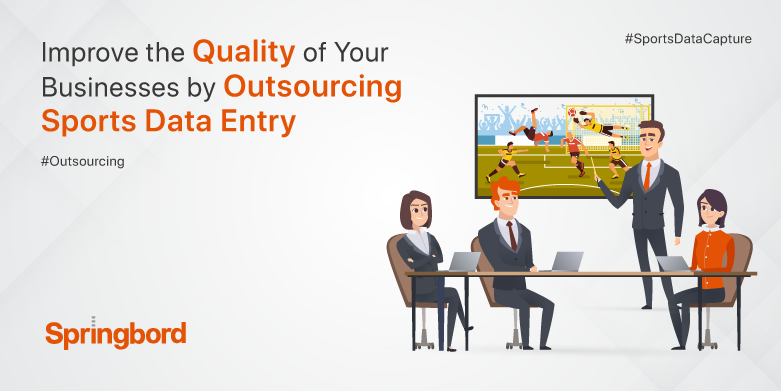 Read time 3 min
Read time 3 minBig data is the most valuable asset in the industry, with applications ranging from traditional scorekeeping and historical records to algorithmic performance predicting and detailed player information. Data helps teams and organizations to monitor progress, forecast future outcomes, and make informed choices. Want to know the greatest football play to use on fourth down? Have a look at the stats. Are you debating whether or not to have your pitcher throw another inning? Find out what the numbers say. Although players ultimately determine the outcome of games, coaches can improve their players’ chances of winning by analyzing relevant data.
The use of analytics has even crept into the way sports spectators take in the games they watch. Off the field, data is used continually by analysts, commentators, and fans to explain plays, make predictions, and fuel fantasy league decisions.
So, let’s investigate:
What Exactly is Sports Analysis?
To foretell the outcome of a play or game, sports analytics involves entering data into mathematical models. Front offices utilize analytics to emphasize player development, while coaches use it to research opponents and improve play calls during games. Off the field, analytics play an important role by supplying information useful for sports betting and fantasy leagues.
Analytics in sports are relatively new and are used to improve all aspects of a sports organization, from individual players to the overall health of the business. Metrics gathered from on-field performance allow teams to fine-tune their game plans, nutritional strategies, and other efforts to maximize their players’ potential. Off the field, corporations may track ticket sales, develop targeted marketing strategies, and cut costs with the use of data.
Numerous aspects of sports can be memorable, including the raucous crowds, the high stakes, and even the snacks. Data is rarely prioritized. Yet what many fans don’t realize is that all the statistics they adore are what make sports so captivating. It’s useful for figuring out things like attendance, team performance, and concession needs. It’s crucial to the success of many sports businesses and guarantees satisfied customers. While statistics might not be your first thought when considering a sporting event, you can’t deny their importance.
Analytics with a focus on advanced data in sports
Evaluation of potential new players
Player monitoring is simplified and streamlined by using Machine Learning (ML) methods like clustering and statistical analysis. These methods aid in finding the best people to work with since they use a data-driven strategy.
Evaluation of potential new players
Player monitoring is simplified and streamlined by using Machine Learning (ML) methods like clustering and statistical analysis. These methods aid in finding the best people to work with since they use a data-driven strategy.
The Foresight of Injuries
Injuries sustained by athletes during competition are unfortunately all too common. Identification is greatly aided by athletes’ body language and methods. Therefore, deep learning algorithms, such as Convolutional Neural Networks (CNNs), aid in comprehending the stances and methods.
Analysis and progress in player training
The value of a player can be raised by in-depth study to design effective training plans and routines. A player’s strengths and faults can be evaluated through specific comments on his or her performance in games and practices.
Strategy
Success rates can be increased with the use of data analytics, which provides in-depth insights into what will occur once the decision is made. Insights like this can help teams maximize their potential.
Replacement of Season Tickets
By employing logistic regression, churning prediction models can pinpoint the season ticket holders most likely to defect. To learn how a campaign affected a client, statisticians can use tools like hypothesis testing and paired t-tests.
Pricing
The most money can be made through ticket sales for any sporting event. Consequently, ticket pricing can aid in maximizing profits by enabling the determination of ticket prices by analysis of previous events.
Conclusion
When analytics are used, sports perform better. Assuring a first-rate customer experience and prioritizing the safety of athletes necessitates an in-depth understanding of the inner workings of a team and its members. In addition to ensuring that sports organizations can adapt their marketing strategies to a world where fashions come and go and new regulations are implemented, this also helps to keep athletes safe.
Wearable technology, online gambling, insurance, and other new fields are all benefiting from data analytics. To maintain a competitive edge, sports businesses can either buy sports data analytics technologies or form strategic alliances with established analytics firms. Springbord is one such data analytics organization that is equipped with a pool of educated resources to achieve expected outputs.







